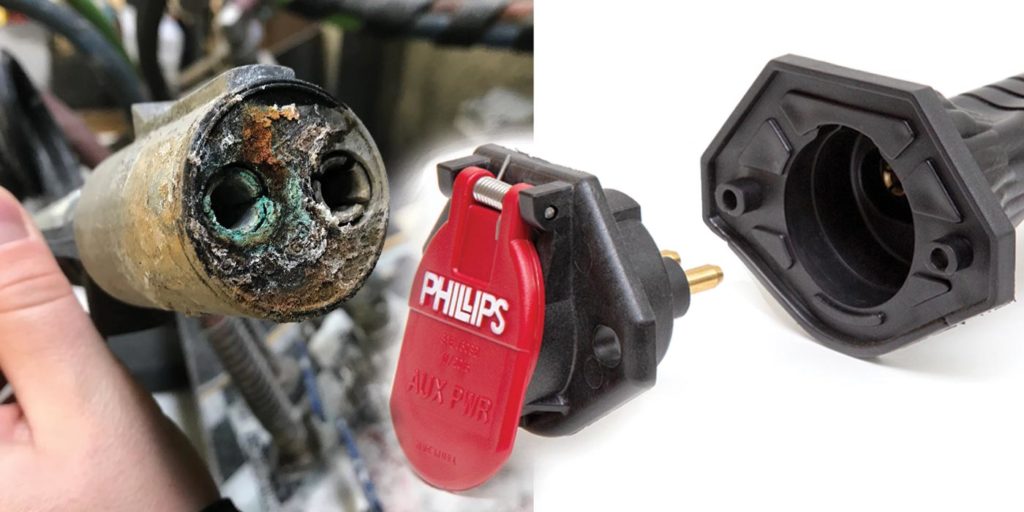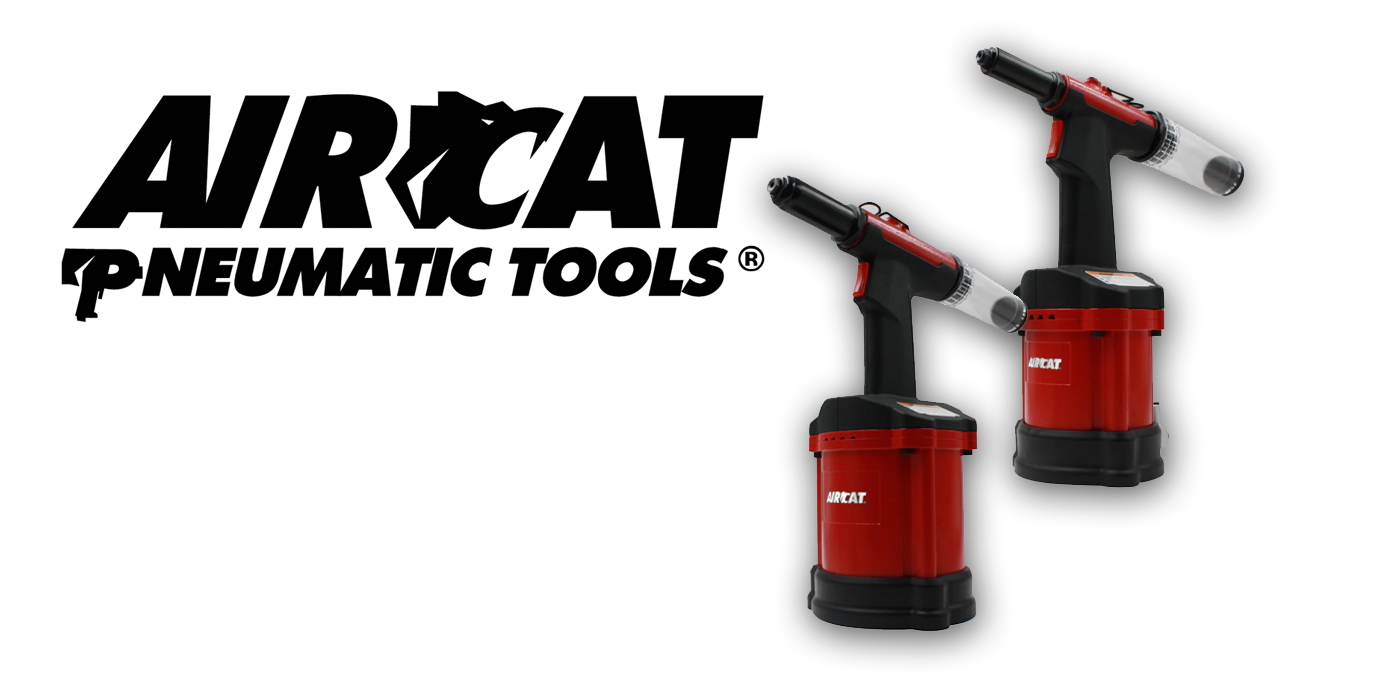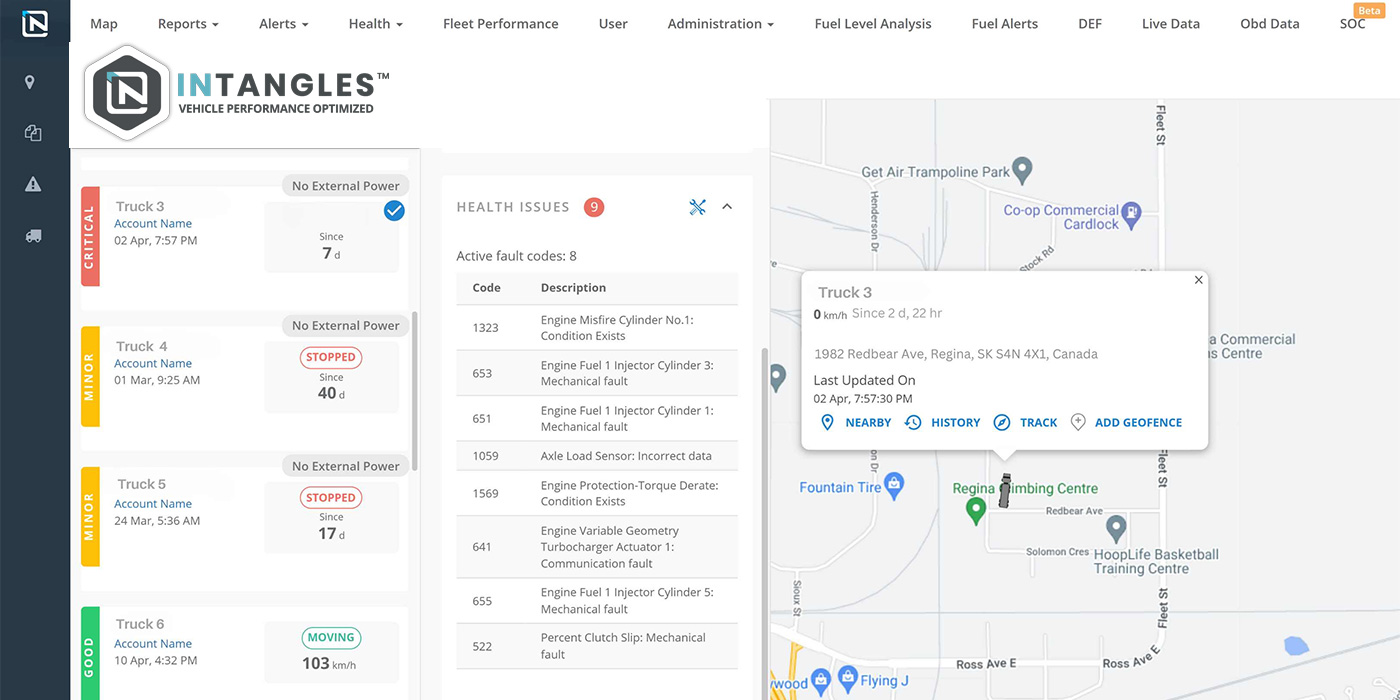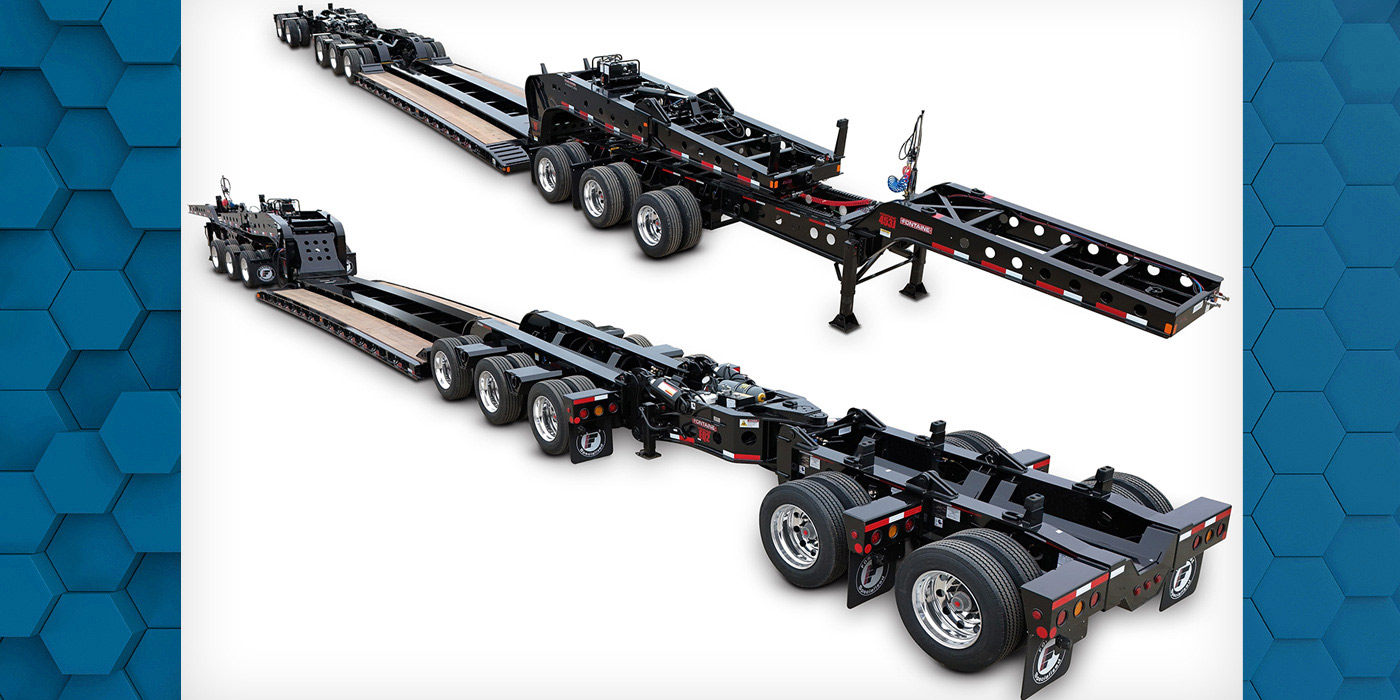Trucks and trailers outfitted with liftgates typically have critical delivery and pickup schedules, so it’s important that the electrical connections and cable are dependable, keeping the liftgate working throughout the vehicle’s daily route.
The liftgate power cord and electrical connections are the gateway for power to travel from the tractor to the trailer to charge the liftgate batteries. Just like the seven-way connection, corrosion buildup is also an issue for liftgate electricals, especially in some geographic areas more than others. If corrosion enters the electrical system via this union, there may not be enough power to charge the batteries to cycle the liftgate. It can slow down or completely block the charge to the liftgate batteries, causing delayed deliveries and downtime for repairs.
A few tips to keep corrosion buildup at bay:
- The liftgate plug and socket interface should be cleaned at every preventive maintenance interval, or more often if the vehicle is exposed to sodium (salt), magnesium or calcium chlorides in cold weather areas.
- Also, inspect the liftgate cable for damage. Replace if cracks or deep nicks in the jacketing are found that would allow for corrosion-causing moisture and contaminants to enter and “wick” their way into the electrical charging system.
- Sockets should always be mounted in a vertical position, flush with the back of the tractor. Sockets that are angled with their openings pointed up will not drain properly and will catch and trap moisture and contaminants. This creates a breeding ground for corrosion inside the socket, which can travel into the liftgate charging system.
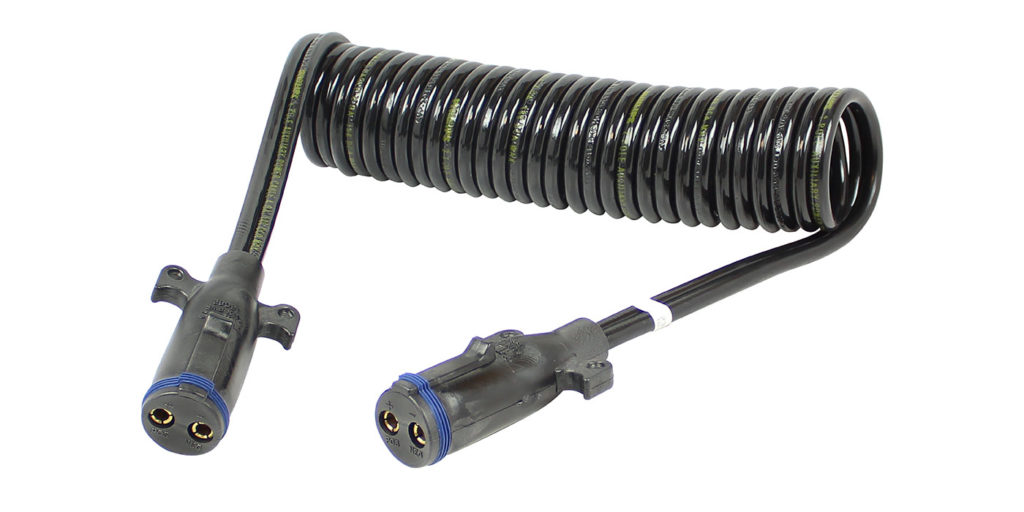
One strong focus of the testing practices at Phillips is to look at how products can reduce corrosion buildup in the electrical system because fleet uptime and repair costs are negatively affected by it. Use weather-proof liftgate products, like Phillips’ Dual Pole QCS2 Quick-Change Socket and Weather-Tite M2 (pictured above), which fight against corrosion. Together, they help block the intrusion of moisture inside the socket at the coupled union.
Phillips also recommends using dual pole sockets and power cords to gives a solid positive (+) and negative (-) connection to complete the charge circuit. The old single pole charge leaves the circuit to rely on a ground through the kingpin and fifth wheel tractor-to-trailer coupling. This is a weak ground at best, as they are coated in grease.
Another important factor in keeping a liftgate working is the wire gauge size used to power the system. After a few liftgate cycles, the charge in the liftgate batteries begins to diminish. Once there isn’t enough power left in the liftgate batteries to cycle it, the system will start drawing power from the tractor batteries as well, and that’s where cable size/gauge becomes important.
Since tractors can hook up with multiple trailers, liftgate wiring may not always be the same gauge throughout the entire charging system. If the gauge of the cable run on the tractor is smaller than the trailer, there is the potential to overheat the tractor wiring. To be prepared for any type of liftgate system that will require the maximum amount of power draw, Phillips recommends using two-gauge cable on the tractor dual pole, which creates a larger current capacity. The two-gauge cable protects the tractor wiring from overheating and ensures that the liftgate system can handle the maximum amount of amperage draw needed to power the liftgate.
This article was contributed by Andrea Smeby, marketing content specialist at Phillips Industries.

